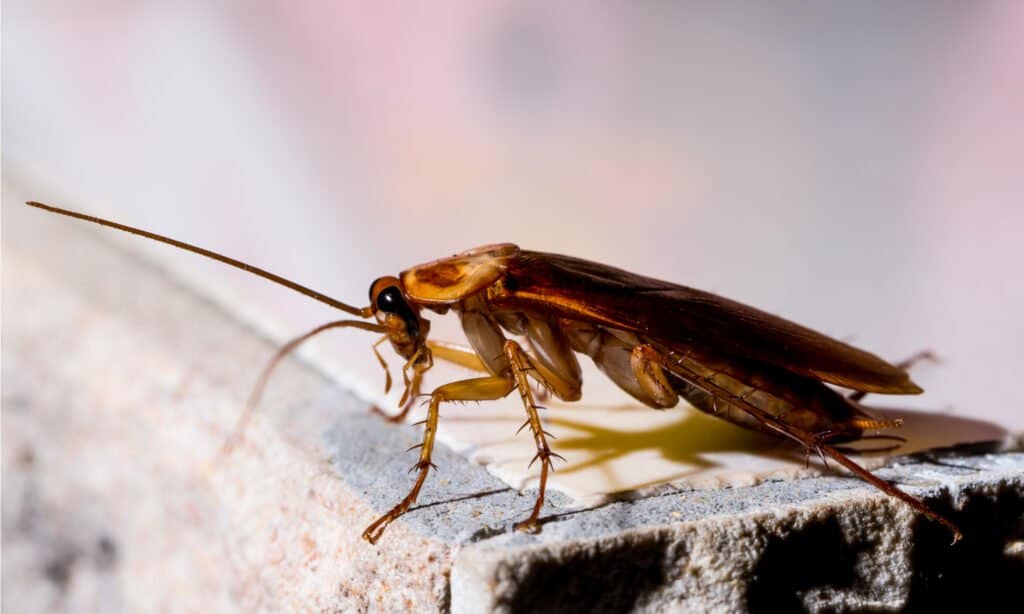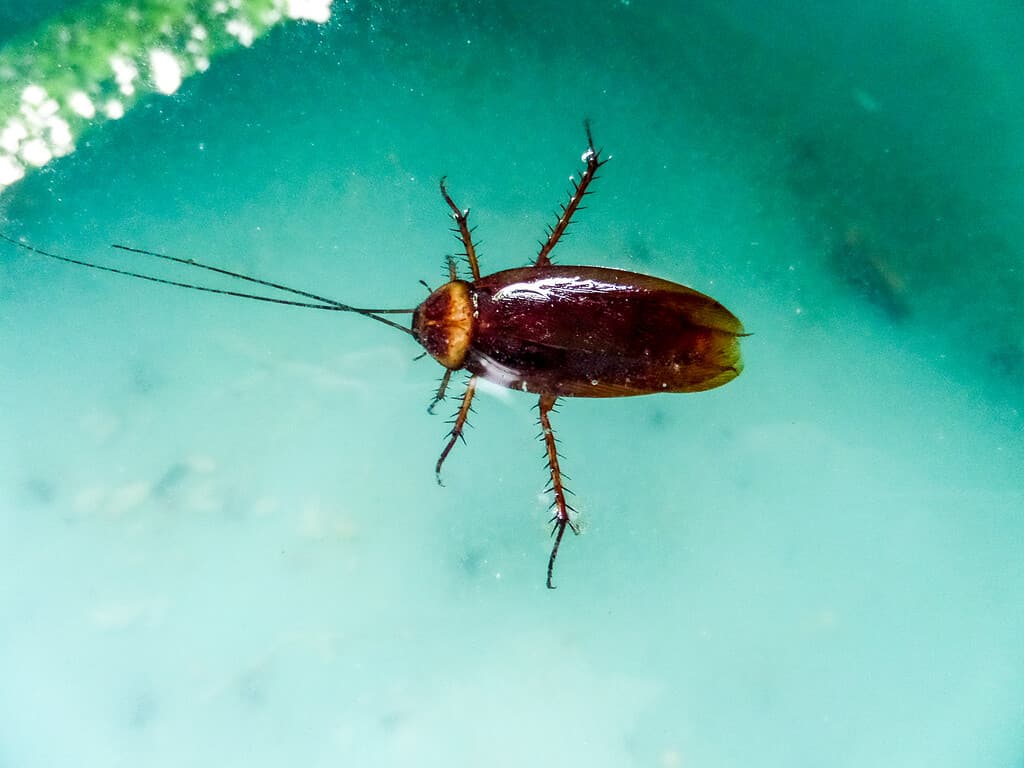When it comes to survival, few can do it better than the cockroach. They aren’t exactly everyone’s favorite animal, although they do have an important supporting role to play in the ecosystem. Without cockroaches, other species would fail to exist, and a domino effect would occur. Buckle up; we are about to discuss why these icky bugs are important and also find out if cockroaches can swim. This may be difficult for some to hear since many flush the buggers down the toilet in hopes of killing them.
Meet the American Cockroach

Truly, the cockroach deserves a round of applause for its consistent hard work and
resistance to death
.
©PitukTV/Shutterstock.com
Cockroaches come in many shapes and sizes, with some more horror-evoking than others. The American cockroach is, of course, typical in America and abundant in many areas. They prefer to live in damp locations under homes, near rotting wood, and away from the light. The cockroaches are nocturnal and come out to find food and water at night while most humans are asleep. They eat almost anything, including soap, wallpaper paste, bookbinding, food left out, and whatever else they may bump into. Cockroaches choose to avoid light so as not to be seen and tend to scurry away from it quickly once a light is turned on. They can be two inches long and fly, which is one thing most people cannot handle about bugs. Where you see one, 100 more are there somewhere!
Can Cockroaches Swim?

Cockroaches can hold their breath underwater for 30 minutes.
©Chayanan/iStock via Getty Images
Yes, cockroaches can swim, but not very well. They can’t do the doggie paddle, backstroke, or really even tread water. What these lightweight insects can do is float. They are also able to hold their breath underwater for 30 minutes and on the surface of water for 40 minutes. Which is probably plenty of time for the one you flushed down the toilet to find its way to safe ground and avoid drowning. You may want to rethink flushing them down the toilet altogether. It is unlikely they will crawl back up the pipes and end up exiting your toilet, but they could.
Why Does It Take Cockroaches So Long to Drown?
Cockroaches have what is called a spiracle respiratory system. Due to having a spiracle respiratory system, a cockroach does not have lungs that it breathes with. Instead, it has holes all over its body that allow air to pass through by opening and closing. In short, if you held a cockroach’s head underwater, it would not matter because that is not how they breathe. If there was considerable damage to the roach’s exoskeleton, it would not be able to take on oxygen and would die.
Roaches do not breathe continuously like mammals do. They do this in order to become more durable against methods used to kill them. If you were to spray poison on a roach, they would seal off their valves and basically hold their breath until they were out of the way of danger. When a roach seals off these holes, it does not let any air in, and it does not let any out. This is how they are able to float in water. Once you have tossed one in the toilet, assuming it will drown, it will hold its breath on and off. They also have another trick. They are experts at playing dead. The roach that’s floating “dead” in your toilet is far from dead; it’s just waiting for the right opportunity to escape.
What We Know About How Cockroaches Handle Water

It’s pretty obvious that cockroaches have survived this long for a reason.
©Novida Ismeyati/iStock via Getty Images
- Cockroaches can drown, but it’s not something quickly accomplished. It will take over 30 minutes to drown a fully submerged cockroach that does not have any access to oxygen. They cannot filter out oxygen from water.
- They are very good at playing dead, even when floating on their backs in water without moving. It’s not like you can watch to see if they are breathing because they do not have lungs, so their sides will not expand and compress to take air in and out of their bodies.
- Cockroaches come equipped with a spiracle respiratory system, which means they have spiracles, similar to valves, that they can open and close as needed. The spiracles are located on their thoraxes and abdomens in multiple spots. Each spiracle connects to the insect’s trachea, which disperses the oxygen throughout the insect’s body.
- Cockroaches have the wrong type of legs for swimming. They may try to kick their legs in different directions frantically, but it will not get them anywhere. Their legs and feet are great for running up just about any type of surface, but they would need paddle-like feet in order to be able to propel forward.
- Cockroaches don’t know how to swim, which is apparent if you’ve ever seen one try. Much like a cartoon character who’s unable to swim, a cockroach will just look frantic and silly. They will have too many parts moving in different directions with a lack of coordination.
- Water that is 125 degrees Fahrenheit or higher can kill a cockroach, but it is up in the air as to how long it might take. They are very uncomfortable in hot weather that’s above 95 degrees Fahrenheit, but the air will just make them seek shelter elsewhere. If they are in hot water, it isn’t something they can escape. Cold water is something they can handle well, even if it’s freezing water. It will make them somewhat uncomfortable, but once they thaw out, they run off just fine. Now, if the water or air temp is in the single digits, it will kill them, but it might take a considerable amount of time. They would need to literally freeze.
- Not all cockroaches respond the same to water. Oriental cockroaches reside near water frequently. They probably don’t enjoy going for a morning swim but can handle falling into water a little bit better than American cockroaches.
The photo featured at the top of this post is © BLUR LIFE 1975/Shutterstock.com
Thank you for reading! Have some feedback for us? Contact the AZ Animals editorial team.







